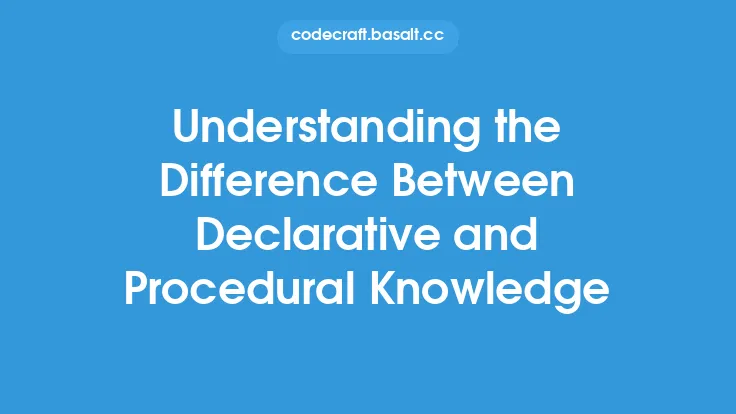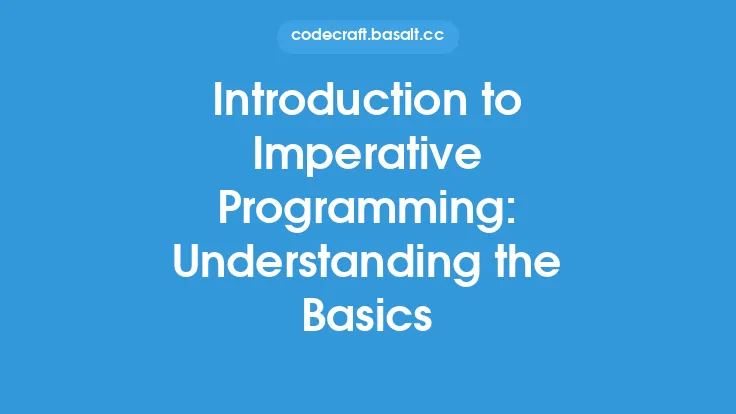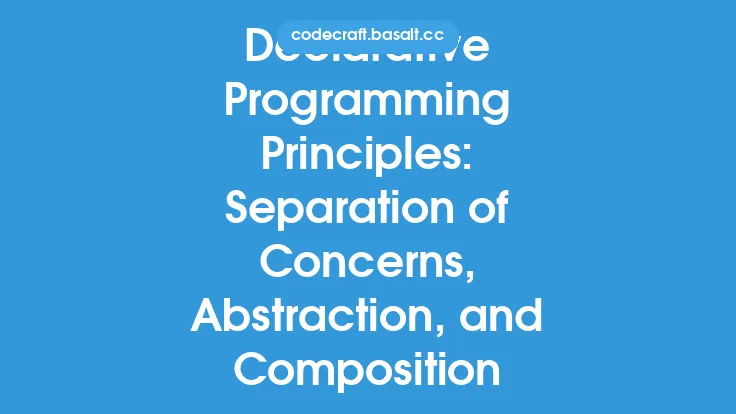In the realm of programming paradigms, two fundamental approaches have emerged: declarative and imperative programming. These two paradigms differ in their approach to solving problems and writing code. Declarative programming focuses on specifying what the program should accomplish, while imperative programming focuses on how to accomplish it. This difference in approach has significant implications for the way code is written, maintained, and scaled.
Declarative Programming
Declarative programming is a paradigm that emphasizes the declaration of what the program should achieve, without explicitly specifying how to achieve it. This approach is often characterized by the use of high-level abstractions, such as queries, rules, and constraints. Declarative programming languages, such as Prolog and SQL, provide a way to specify the desired outcome, and the language itself determines the best way to achieve it. For example, in SQL, a query is written to specify the data that should be retrieved, without specifying the exact steps to retrieve it. The database management system then determines the most efficient way to execute the query.
Imperative Programming
Imperative programming, on the other hand, is a paradigm that focuses on the steps required to achieve a specific goal. This approach is often characterized by the use of loops, conditional statements, and assignments. Imperative programming languages, such as C and Java, provide a way to specify the exact steps to achieve a goal, and the programmer is responsible for determining the best way to implement it. For example, in C, a program is written to specify the exact steps to sort an array, including the use of loops and conditional statements.
Key Differences
The key differences between declarative and imperative programming lie in their approach to problem-solving and code writing. Declarative programming focuses on the what, while imperative programming focuses on the how. Declarative programming is often more concise and easier to read, as it eliminates the need to specify low-level details. Imperative programming, on the other hand, provides more control over the execution of the program, but can be more verbose and error-prone.
Programming Languages
Programming languages can be classified as either declarative or imperative, depending on their syntax and semantics. Declarative languages, such as Prolog and SQL, are designed to support declarative programming, while imperative languages, such as C and Java, are designed to support imperative programming. However, many modern programming languages, such as Python and JavaScript, support both declarative and imperative programming styles. For example, Python's list comprehensions and JavaScript's array methods provide a declarative way to manipulate data, while their loop constructs and conditional statements provide an imperative way.
Use Cases
The choice between declarative and imperative programming depends on the specific use case. Declarative programming is well-suited for problems that involve complex queries, rules, and constraints, such as database queries, expert systems, and artificial intelligence. Imperative programming, on the other hand, is well-suited for problems that require low-level control, such as operating system development, embedded systems, and high-performance computing. In many cases, a combination of both declarative and imperative programming styles is used to solve a problem.
Advantages and Disadvantages
Declarative programming has several advantages, including improved code readability, maintainability, and scalability. Declarative code is often more concise and easier to understand, as it eliminates the need to specify low-level details. However, declarative programming can be less efficient than imperative programming, as the language itself determines the best way to execute the code. Imperative programming, on the other hand, provides more control over the execution of the program, but can be more verbose and error-prone.
Conclusion
In conclusion, declarative and imperative programming are two fundamental approaches to solving problems and writing code. Declarative programming focuses on specifying what the program should accomplish, while imperative programming focuses on how to accomplish it. Understanding the key differences between these two paradigms is essential for choosing the right approach for a specific problem. By recognizing the strengths and weaknesses of each approach, programmers can write more effective, efficient, and maintainable code. As programming languages continue to evolve, the distinction between declarative and imperative programming will remain an important aspect of software development.





